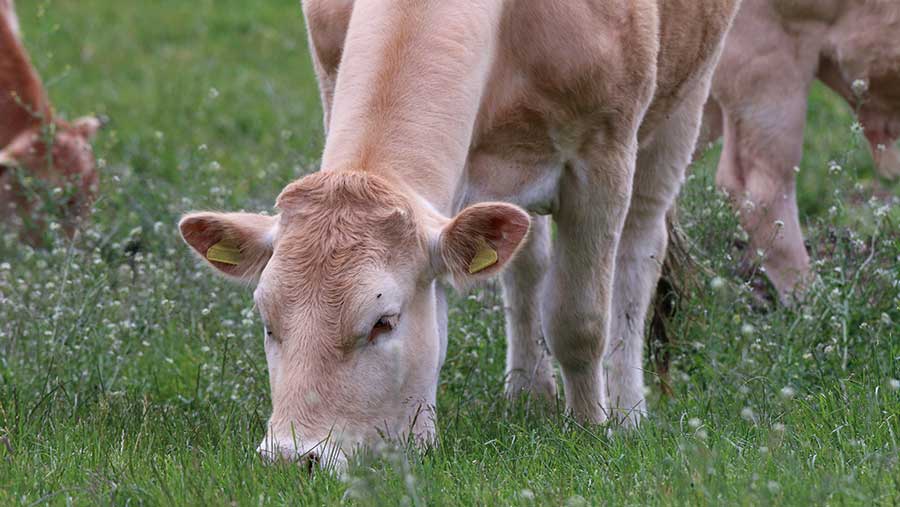Welsh suckler herd efficiency ‘has room to improve’
 © Tim Scrivener
© Tim Scrivener Welsh suckler farm profit and efficiency is being hampered by calving interval and age at first calving, says HCC (Meat Promotion Wales) in response to the latest cattle data.
Welsh beef cows that died in 2017 averaged 5.5 calves over a nine-year lifespan, which, while showing improvement on 2016 figures, can be enhanced to lift farm incomes.
British Cattle Movement Service (BCMS) figures show the average Welsh suckler cow had a calving interval of 426 (61 days over a year) and first calved aged more than two-and-a-half years.
This remains well adrift of calving at two years old and a 365-day calving interval.
See also: 400-day growth rate may reduce suckler herd efficiency
However, figures are improving, back from a 1,019-day first calving age and a 427.8-day calving interval in 2016.
This means Welsh farmers have cut 10 days off first calving date and almost two days off calving interval.
The numbers
- 2017 dams first calved at 1,009 days, with a 426-day calving interval
- In 2016, Welsh heifers first calved at 1,019 days and had a calving interval of 427.8 days
- English herds first calved at 998 days with a 419.7-day calving interval
HCC data analyst Glesni Phillips said the Farm Business Survey figures showed a “marked difference” between the most and least efficient beef enterprises.
Shorter calving intervals are a very important factor in business profitability, she said.
“Cattle prices have been strong in recent months, reflecting a long-term decline in supply as well as short-term factors such as the weak pound,” said Ms Phillips.
“However, continuing to address the key fertility issues as highlighted in the new BCMS data would benefit the industry more generally in terms of farmers’ bottom line.”
